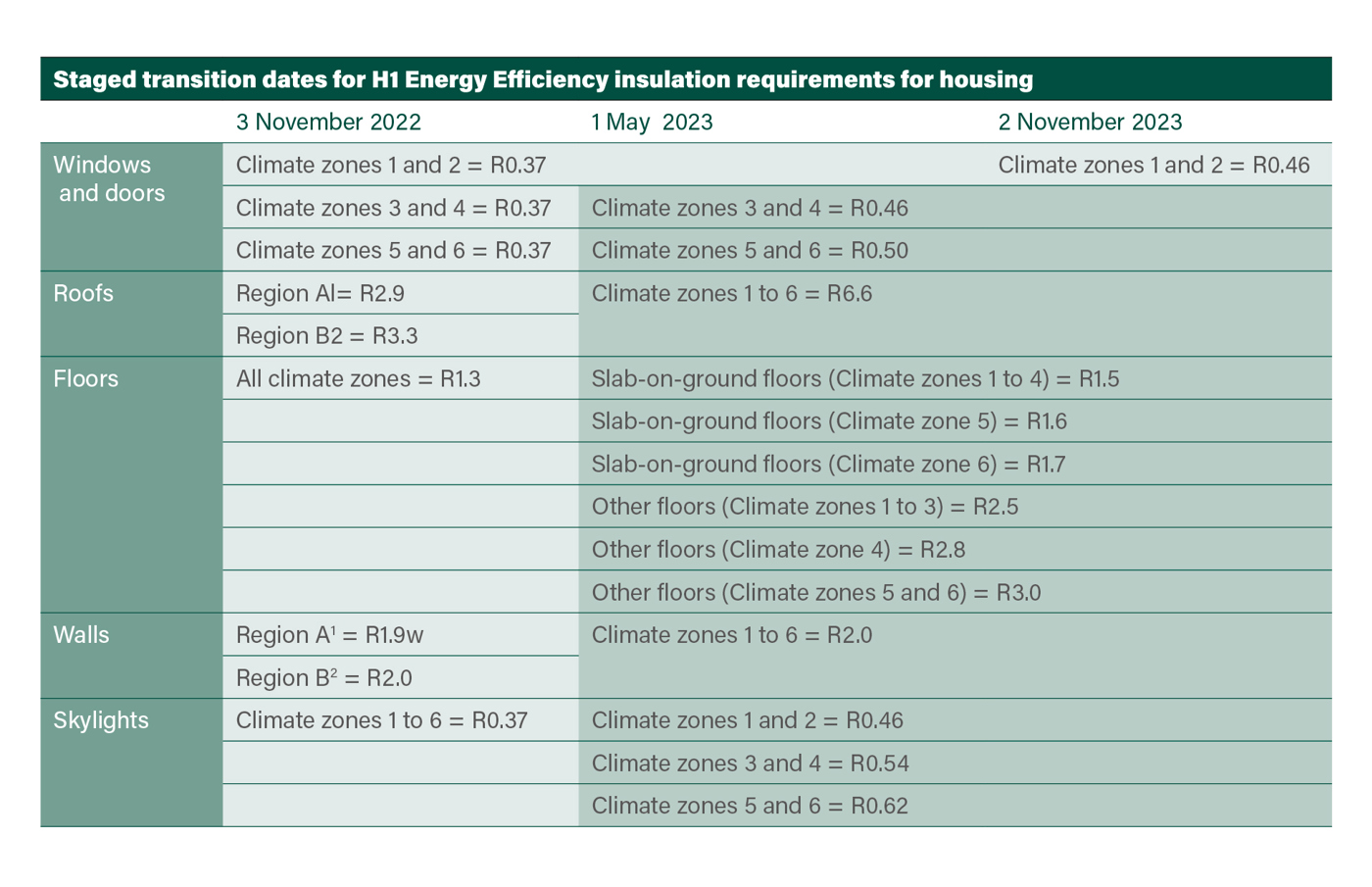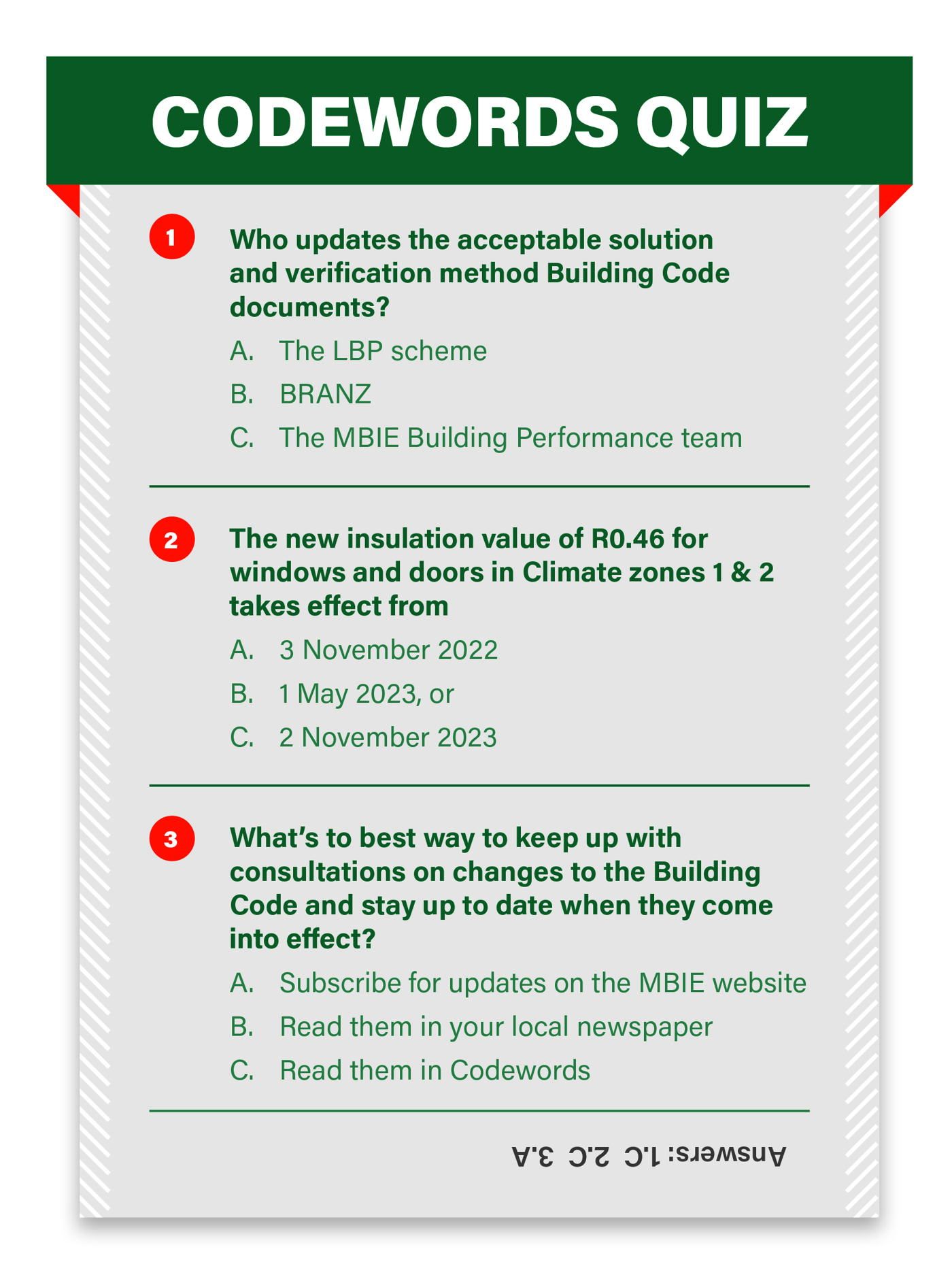The MBIE Building Performance team updates the acceptable solution and verification method Building Code documents regularly. We do this to ensure that the system is effective and keeps pace with modern methods of construction, products and technologies, and that our buildings are safe, healthy and durable.
![]()
These changes have a direct impact on the work that you do, so it’s really important that you find out about them as early as possible and get the opportunity to let us know what you think. When we are proposing changes to the Building Code regulations or to the acceptable solutions and verification methods, we run a consultation first. This is your chance to submit feedback on the proposed changes.
Summary of Building Code consultations
There have been a number of changes to get up to speed with recently. Here are some of the key points from the 2021 and 2022 updates that we wanted you to be aware of.
2022 Building Code updates
In 2022 we consulted on changes for plumbing and drainage, protection from fire and structural stability of hollow-core floors. You can read the proposal documents via the link at bottom of this article.
This consultation closed on 1 July 2022 and received over 100 detailed submissions and comments.
The proposal that received the most interest was the changes to protection from fire for residential buildings. The plumbing and drainage proposals for lead in plumbing products and water temperatures also received a significant number of responses.
The Building Performance team have made decisions on two parts of the proposed changes to the Building Code - lead in plumbing products, and the structural stability of hollow-core floors.
Decision on hollow-core floors
The Building Performance team has removed the deemed to comply pathway in B1/VM1 for the design of the supports for hollow-core floor systems to minimise the chance of poorly designed systems being specified in new building work.
The amended Verification Method B1/VM1 will be published along with other documents in November 2023. This change for hollow-core floor systems will take immediate effect when published – there will be no additional transition period.
Decision on lead in plumbing products
The Building Performance team is amending Acceptable Solution G12/AS1 to limit the maximum allowable content of lead permitted in plumbing products. The transition period for this change will end on 1 September 2025. As the transition period extends to 2025, the revised acceptable solution will be published in alignment with the rest of the plumbing and drainage updates in November 2023.
By announcing these decisions prior to the publication of the revised acceptable solutions and verification methods, we aim to provide certainty and direction to the sector and give additional time to implement the required change.
Read the summary via the link at the bottom of this article of the decisions on lead in plumbing products and the structural stability of hollow-core floors.
Decision on other proposals
Due to the breadth of in-depth submissions received for the 2022 consultations, we will announce the remaining decisions prior to publishing the Building Code acceptable solutions and verification methods in November 2023. This additional time is required to thoroughly work through the submissions and ensure all points of view are considered. This timeframe will also allow us to prepare the necessary supporting educational material such as guidance documents, learning modules and webinars.
2021 Building Code updates
In 2021 we published updated acceptable solutions and verification methods for building code clauses B1, E2, G7 and H1. The transition period for the 2021 Building Code updates ended on 2 November 2022. This means that building consent applications submitted on or after 3 November 2022 that use one of the updated acceptable solutions or verification methods as a means of compliance should now use the most recent versions of the documents.
Staged implementation for H1 insulation requirements for housing
The updates to the acceptable solutions and verification methods for H1 Energy efficiency are effective now. The revised documents also provide a staged transition for insulation in housing as shown in the Figure.

H1 education modules
To help people understand the updated H1 requirements, the Building Performance team have created new learning modules covering insulation, energy efficiency and climate zones.
Module 1 is aimed at homeowners and the general public. It explains why insulation is important in buildings to increase energy efficiency and the benefits of installing better insulation. It helps to identify the climate zones that different parts of the country fall into and the background to the new requirements for houses that will apply from May next year.
Module 2 teaches you about the different compliance pathways for the Building Code’s energy efficiency requirements, and how to choose the appropriate acceptable solution or verification method for your building.
Modules 3 and 4 are under development and will be published later this year.
Stay up to date with Building Code updates
We know that there have been a lot of different things to get up to speed with, but we are committed to working alongside the building and construction sector to ensure successful implementation of these important changes.
Find out about consultations on changes to the building code, acceptable solutions and verification methods and stay up to date with changes when they come into effect by subscribing for updates via the link below.
